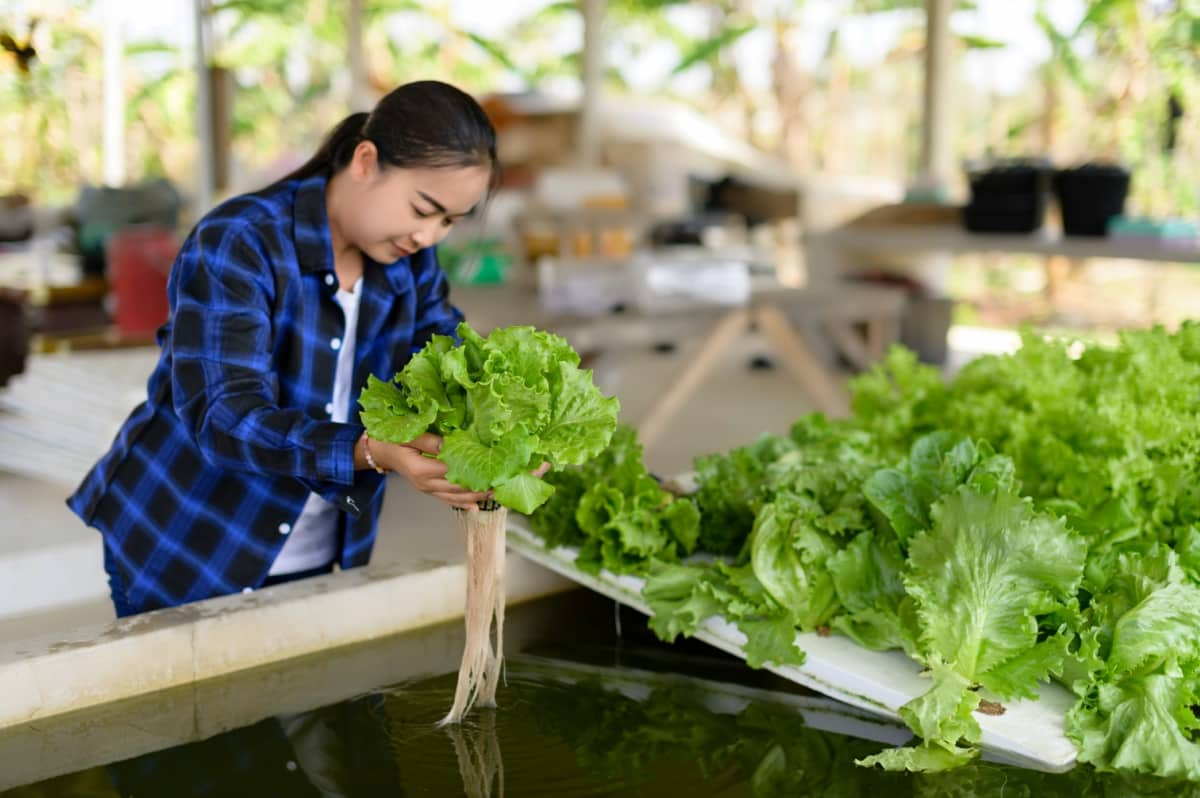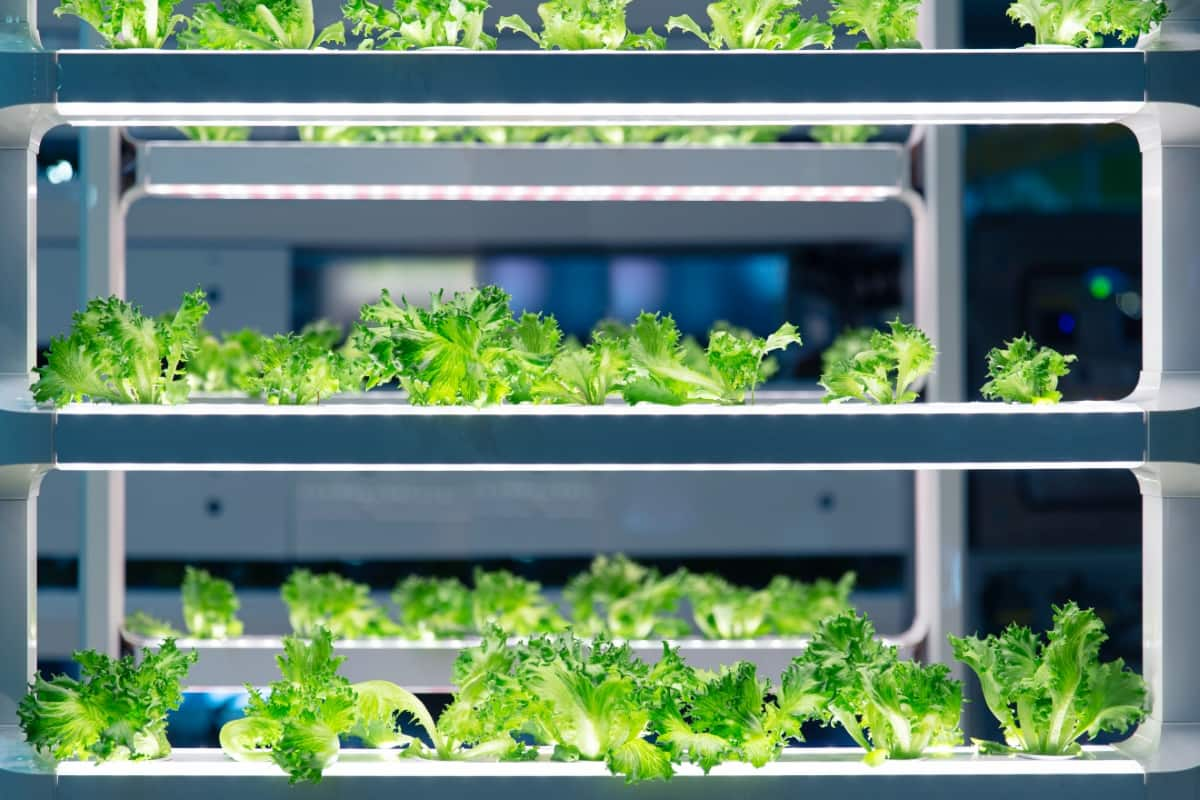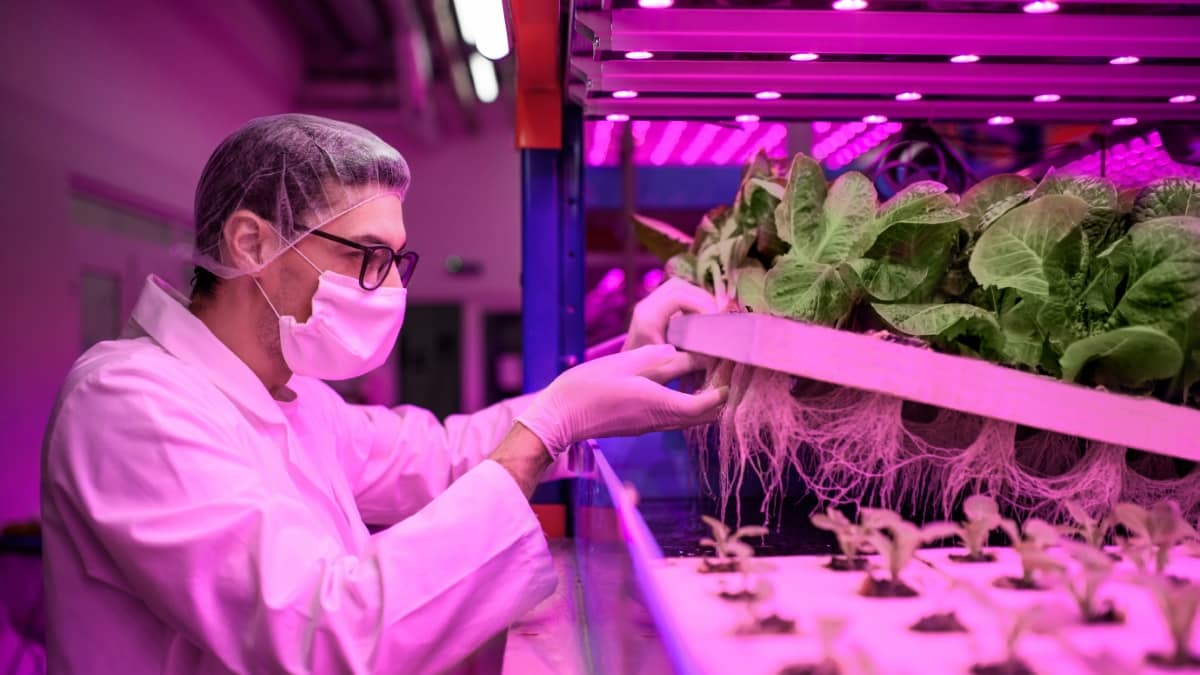Welcome to the world of aquaponics, where the art of cultivating vibrant lettuce meets the science of sustainable aquatic ecosystems. If you’re a novice or a green-thumbed enthusiast looking to embark on a rewarding journey, this guide will unveil the secrets of cultivating lush, chemical-free lettuce through aquaponics. Discover how to strike the perfect balance between aquatic life and plant growth as we delve into the step-by-step process of nurturing aquaponic lettuce from seed to harvest.

How to Grow Aquaponic Lettuce
What is Aquaponic Lettuce Cultivation?
Aquaponic lettuce cultivation offers benefits, making lettuce an ideal choice for your aquaponics garden. Lettuce grows rapidly in aquaponic systems, flourishing twice as fast as traditional methods. Its low-maintenance nature and adaptability to varying water temperatures make it an effortless crop to grow and monitor.
Three popular aquaponic lettuce varieties are loose-leaf, butterhead, and romaine, each offering unique characteristics and flavors. With nutrient-rich water available 24/7, lettuce in aquaponics can grow at astonishing rates, potentially reaching harvestable size in just two weeks, making it one of the fastest-growing vegetables worldwide.
Growing Lettuce in Aquaponics
Methods for Growing Lettuce in Aquaponics
- Floating Raft or Deep Water Culture (DWC): The floating raft method utilizes polystyrene rafts to float on the water. Lettuce seeds are placed in foam sponges within net pots, then inserted into holes in the raft. Roots dangle into the oxygenated, nutrient-rich water, promoting rapid growth.
- Media Bed: The media bed method involves planting lettuces directly in a grow bed. Bell siphons flood and drain the bed, ensuring roots access nutrient-rich water for accelerated growth.
Instructions for Growing Lettuce in Aquaponics
- Starting Lettuce Seeds Place 3 to 5 seeds in a starter medium like Rockwool 3D squares or peat pellets. Insert the squares or pellets into a starting tray and water them. Mist the tray daily for around 14 days until the seeds sprout. Transfer the sprouted seedlings to the aquaponics system when they’re sizeable or show 2 to 3 true leaves.
- Transplanting Lettuce Transplant lettuce seedlings after three weeks. For colder climates, expose them to the cold and sunlight for 3 to 5 days for adaptation. In warmer climates, use a sunshade for 2 to 3 days to reduce stress. Maintain a high nitrate level for crisp and sweet lettuce.
Maintenance Tips
- Check pH weekly and adjust if above 7, aiming for 6.8.
- Use de-chlorinated water for system top-ups.
- Manage pests without harming fish – physically remove pests or introduce beneficial insects. Companion planting with chives or mints can help deter pests in the aquaponics garden.
Best Practices for Caring for Aquaponic Lettuce
- Start Lettuce Seeds Germination: Begin with germinating lettuce seeds, which takes 3 to 7 days. Choose the best-starting medium like Rockwool Cubes, Coco Coir Pellets, Peat Pellets, or Perlite.
- Transplant Seedlings: After three weeks, transplant seedlings with 2 to 3 true leaves into the aquaponic system. Add phosphorous for strong root growth and stress reduction.
- Maintenance: Maintaining aquaponic lettuce is easy. Ensure proper aeration, provide 8 to 16 hours of light, add fish feed, and monitor nitrate levels. Harvest on time for continuous growth.
- Water Temperature: Maintain water temperature at 70 to 74°F (21-23°C) to facilitate lettuce growth, which aligns with ideal fish conditions.
- pH Levels: Keep pH between 5.5 to 6.0 for optimal lettuce growth, though it can tolerate some variations.
- Plant Spacing: Plant lettuce 7 inches apart to avoid competition for nutrients and light.
- Pest Control: Use beneficial insects or physical removal to control pests without harming the fish.
In case you missed it: 10 Common Problems With Lettuce: Treatment and Solutions

Optimal Conditions for Growing Lettuce in Aquaponics
- Hydroponic pH: Maintain a pH range of 5.5 to 6.0.
- Temperature: Ideal temperatures are between 70 to 74°F (21-23°C).
- Plant Spacing: Space lettuce plants 7 to 12 inches apart.
- Mature Plant Height: Expect lettuce to grow 8 to 12 inches tall.
- Mature Plant Width: The width typically ranges from 10 to 14 inches.
- Germination: Seeds germinate in 3 to 7 days at 55 to 70°F (13-21°C).
- Harvest Time: Most lettuce varieties can be harvested in 24 to 32 days.
- Light Exposure: Provide direct sunlight but slight shading during warm temperatures.
- Recommended Aquaponic System: Choose from Deep Water Culture, Nutrient Film Technique, or Media Bed methods.
Important Facts about Aquaponic Lettuce
Lettuce is a highly sought-after vegetable with low nutrient requirements, making it suitable for aquaponics. It thrives as a winter crop, making it an excellent choice for aquaponic systems. Ensure nighttime temperatures range from 37°F to 54°F and daytime temperatures stay between 63°F and 82°F for optimal growth. Avoid water temperatures above 79°F, as they can cause bitterness. For summer-grown lettuce, increase calcium concentrations to prevent tip burn and promote healthy growth.
Nutrient Requirements for Aquaponic Lettuce
Aquaponic lettuce requires specific nutrient requirements for optimal growth. Nitrogen is essential for leafy green growth, with a nitrogen level of 20-50 ppm in the system water. Phosphorus is vital for root development, with 10-30 ppm levels. Potassium promotes overall plant health, with levels between 20-40 ppm. Calcium prevents tip burn, with levels around 25-100 ppm. Iron is essential for chlorophyll production, with 2-10 ppm levels. Magnesium aids in photosynthesis, with levels between 10-30 ppm.
Common Pests and Diseases in Aquaponic Lettuce
- Aphids: Small, sap-sucking insects that weaken lettuce plants.
- Whiteflies: Tiny, flying pests that feed on plant sap and transmit viruses.
- Thrips: Scavenging insects that cause leaf discoloration and damage.
- Powdery Mildew: Fungal disease leading to white powdery patches on leaves.
- Downy Mildew: Fungal infection causing yellow patches and downy growth on leaves.
- Pythium Root Rot: Soil-borne disease causing root decay.
- Fusarium Wilt: Fungal disease causing wilting and stunted growth.
Harvesting and Storing Aquaponic Lettuce
In aquaponics, lettuce grows rapidly and can be harvested in just two weeks or when leaves reach the desired size. Harvest early in the morning for the best quality when the leaves are crisp and moist. After harvesting, cool the leaves promptly to preserve their freshness. Proper harvesting and immediate chilling will ensure you enjoy your aquaponic lettuce’s full flavor and nutrition.
Seasonal Considerations for Aquaponic Lettuce Cultivation
Lettuce growth may slow down in colder seasons due to reduced sunlight and lower water temperatures. Supplemental lighting and insulation can help maintain optimal conditions. In warmer seasons, water temperatures may rise, leading to potential bitterness in lettuce leaves. Adequate shading and proper nutrient management are essential.
In case you missed it: Frequently Asked Questions About Growing Lettuce from Seed to Harvest

Conclusion
Growing and caring for aquaponic lettuce is a rewarding and sustainable journey. You can enjoy the year-round harvest of fresh, nutritious lettuce with optimal conditions, proper nutrient management, and vigilance against common issues.
- Feed Your Flock for Less: Top 10 Tips to Save on Chicken Feed
- Ultimate Guide to Ossabaw Island Hog: Breeding, Raising, Diet, and Care
- Hatching Answers: The Top 10 Reasons Your Chickens Aren’t Laying Eggs
- Eggs and Economics: Breaking Down the Cost of Raising Backyard Chickens
- Defend Your Greens: Proven Methods to Keep Iguanas Out of Your Garden
- Ultimate Guide to Cinnamon Queen Chicken: A Comprehensive Guide for Beginners
- Ultimate Guide to California Tan Chicken: Breeding, Raising, Diet, Egg-Production and Care
- Ultimate Guide to Marsh Daisy Chicken: Breeding, Raising, Diet, and Care
- 10 Types of Chicken Farming Businesses You Can Start for Profits